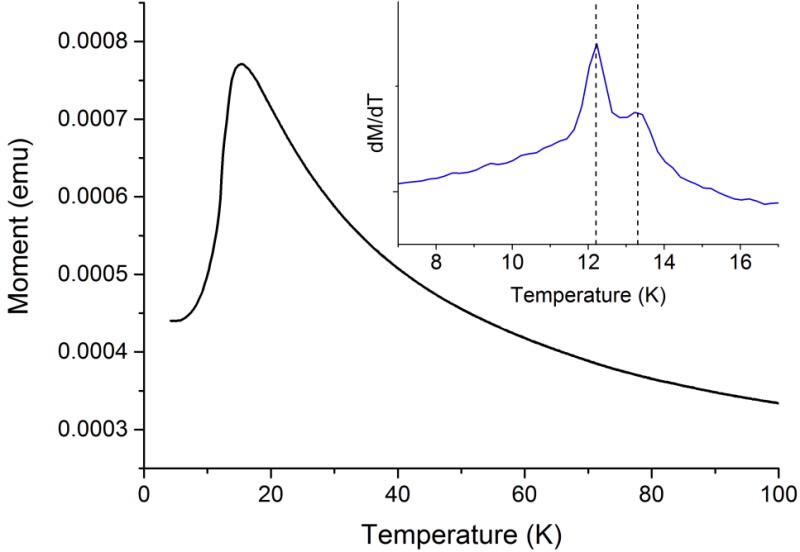Following the successful commissioning of our new Physical Properties Measurement System, we have now taken the first magnetisation data, in this case from a NiFe/Fe2O3 exchange-spring film sample. This system is related to the project "Densely Wound Exchange Springs in Permalloy (Ni80Fe20)/Hematite (Fe2O3) Bilayers" , in which we observed that an artificial spin spiral can be created within a exchange-biased ferromagnetic NiFe layer when in contact with an antiferromagnetic Fe2O3 layer simply by rotating the sample in an applied magnetic field.
The hysteresis loops below show the transition from the high-temperature non-biased into the low-temperature exchange-biased state below the blocking temperature (≈90 K) of the antiferromagnetic Fe2O3 layer. In this state, the centre of the hysteresis loop is significantly shifted along the magnetic field axis and the coercivity increases. Spin spirals only occur in the exchange-biased state of the sample. Polarised neutron reflectometry data showing the spin-spiral effect have been already collected at PLATYPUS in the 2015-1 round.
The data shown here were taken by Grace Causer (as part of her PhD project with University of Wollongong), Frank Klose and Ko-Wei Lin, who is on sabbatical with us at the Institute from National Chung Hsing University (in Taiwan) for 6 months.
For more of our neutron work on systems like this, please see: Cortie, DL; Lin, KW; Shueh, C; Hsu, HF; Wang, XL; James, M; Fritzsche, H; Brück, S and Klose, F, Exchange bias in a nanocrystalline hematite/permalloy thin film investigated with polarized neutron reflectometry, Phys. Rev. B 86(5), Art. No. 054408 (2012). DOI
In addition, we have also made DC magnetic susceptibility measurements from bulk materials, specifically in the case shown below NaFePO4. Anomalies in temperature dependence of susceptibility signal magnetic ordering transitions, which can then be studied using neutron scattering. The graph shows DC magnetic susceptibility of NaFePO4 as studied by collaboration between the University of Sydney, the Indian Institute of Science and ANSTO. The anomaly at 13K indicates a previously reported antiferromagnetic transition. However, a closer look at the derivative dM/dT shows that there are two magnetic transitions (see inset). The nature of the intermediate magnetic phase will soon be further investigated by means of neutron diffraction at OPAL.



